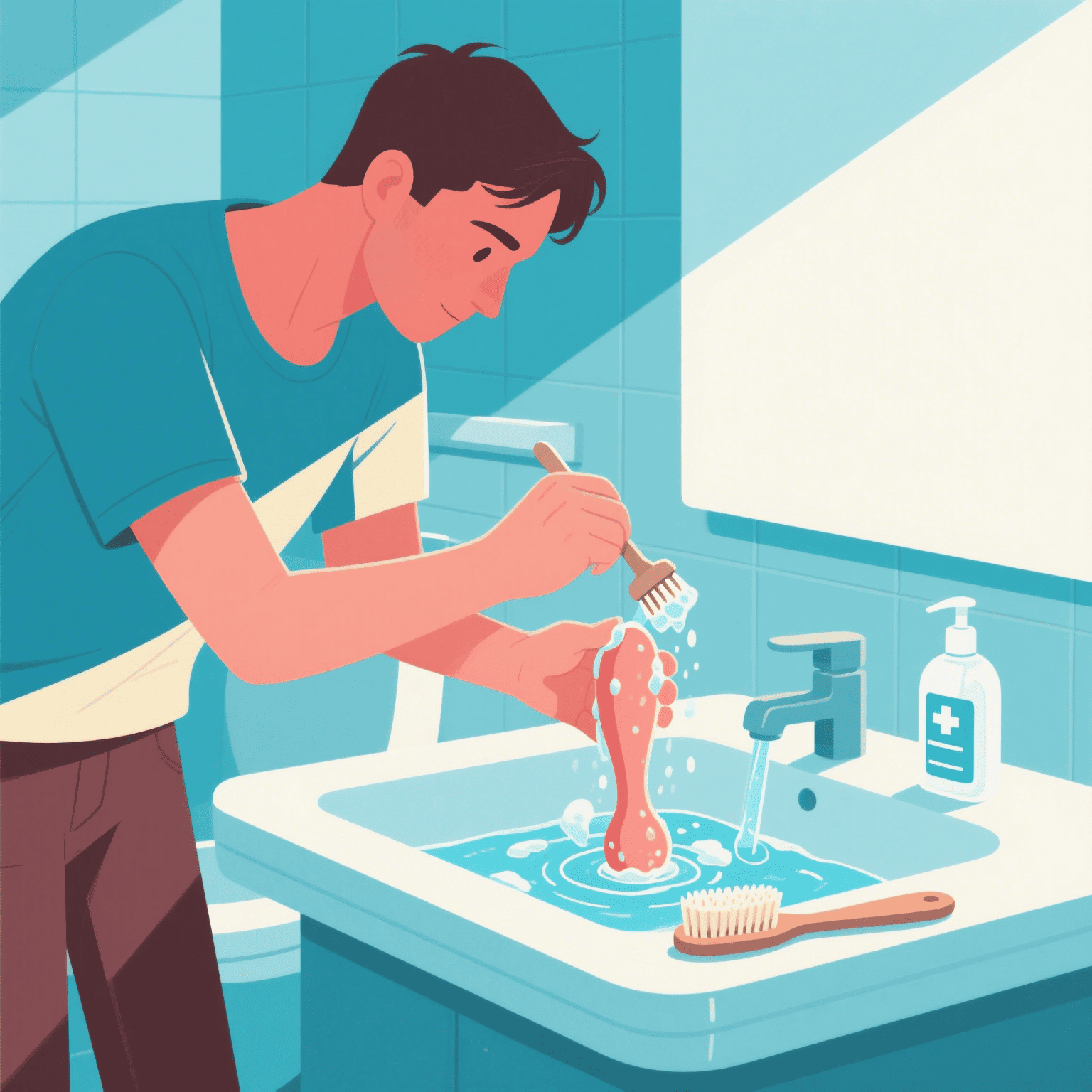Contents
Rising Interest in Prostate Massage: More people are exploring prostate stimulation for pleasure or perceived health benefits, leading to curiosity about DIY options.
Motivations for Homemade Tools: Cost, privacy, and the assumption that everyday objects can substitute for proper devices often drive people toward homemade solutions.
Serious Safety Risks: The rectum is extremely sensitive, and using untested or improvised items can cause injury, infection, or medical emergencies—making homemade prostate massagers unsafe.

Section 1: The Unacceptable Risks of Homemade Prostate Massagers
A. Rectal Anatomy & Extreme Vulnerability
The rectal lining is thin and fragile, easily prone to tears, abrasions, or internal bleeding from rough or improperly designed objects. Unlike the vagina, the rectum lacks natural lubrication and has a delicate mucus membrane that can’t withstand friction from non-body-safe materials. Additionally, the rectum is close to major blood vessels and organs, meaning an infection or injury here can quickly escalate to sepsis or organ damage.
One of the most critical risks is object retention: the rectosigmoid junction, a bend in the large intestine, can trap objects, making them impossible to retrieve without medical help. This is why commercial prostate massagers always have a flared base—but homemade items rarely do, leading to emergencies.
B. Severe Infection Risks
The rectum is home to bacteria like E. coli, which can cause severe infections if introduced into the prostate or bloodstream. Prostatitis (prostate inflammation), cellulitis (skin/tissue infection), or even sepsis (blood poisoning) are real risks. Cross-contamination from using the same object in multiple orifices (e.g., anal to vaginal) or sharing items compounds these dangers. Symptoms like rectal pain, fever, or discharge require immediate medical attention.
C. Chemical Leaching & Material Degradation
Body heat and rectal moisture break down non-body-safe materials, causing toxic chemicals like phthalates (from PVC), BPA, or dyes to leach into the body. These are endocrine disruptors linked to hormonal imbalances and reproductive issues. Even "safe" materials like household silicone can degrade, releasing irritants that cause chemical burns or allergic reactions in the sensitive rectal lining.
D. Physical Injury Hazards
E. Underlying Medical Conditions
DIY prostate massage is especially dangerous for those with:

Section 2: Why Household Materials Are NOT Body-Safe for Rectal Insertion
A. The Critical Distinction: "Food-Safe" vs. "Body-Safe"
B. Detailed Breakdown of Unsafe Household Materials
1. Plastics (High Risk)
Most household plastics (e.g., water bottles, Tupperware) are porous, contain unknown chemicals, and can brittle over time. Recycling codes (e.g., #1 PET, #2 HDPE) don’t guarantee safety for rectal use. Hard plastics like acrylic can shatter, while soft plastics leach phthalates.
2. Glass (Extreme Caution)
Only borosilicate (Pyrex) or medical-grade glass is marginally safer, but even then, thermal shock (e.g., hot water + cold glass) can cause cracking. Common glassware (drinking glasses, vases) are too thin and prone to chipping—never use them.
3. Wood (Absolutely Unsafe)
Wood is inherently porous, trapping bacteria even after sanding. Natural resins or wood treatments (varnish, glue) may be toxic, and splinters can cause painful infections. No exceptions for internal use.
4. Metals (Limited Options)
Only polished, surgical-grade stainless steel (e.g., 316L) is safe. Household metals (kitchen spoons, hardware) rust, have rough edges, or contain nickel/alloys that irritate tissue.
5. Organic Materials (Strongest Warning)
Fruits/vegetables (cucumbers, carrots) are a disaster: they rot, harbor pesticides, and can break apart inside the rectum. Even if "clean," their lack of structural integrity and rapid bacterial growth make them non-negotiably dangerous.
6. Waxes/Candles
Low melting points mean they can burn the rectum or leave sticky residue. Cleaning wax from the anal canal is nearly impossible, increasing infection risks.
7. Silicone (Household vs. Medical Grade)
Household silicone sealants (for bathrooms) contain curing agents and additives that leach chemicals. Only platinum-cure, medical-grade silicone (used in commercial toys) is safe—and even then, avoid homemade shapes without proper flared bases.
Section 3: Proper Hygiene and Preparation (Even for "Safer" Alternatives)
A. The Absolute Necessity of Lubrication
B. Cleaning and Sterilization
C. The Single-Use Imperative
Most homemade items (e.g., fruits, poorly made plastics) are too risky for reuse. Dispose of single-use items immediately after use to avoid degradation or contamination.
D. The Flared Base: Non-Negotiable
Any item inserted anally must have a flared base wider than the anal opening to prevent loss. Homemade items like chopsticks or smooth objects lack this, making them hazards.
Section 4: Safe and Responsible Alternatives
A. Why Manufactured Prostate Massagers Are Non-Negotiable
B. Where to Find Safe Options
C. Other Safe Methods
Conclusion: Prioritize Health Over Risk
Homemade prostate massagers pose unacceptable risks: infection, chemical poisoning, physical injury, and even life-threatening emergencies. The allure of DIY is outweighed by the safety and reliability of commercial products designed for this exact purpose. Remember: your sexual health is worth investing in. Choose tested, body-safe toys, consult a healthcare provider if needed, and prioritize enjoyment without compromising safety.
1. Why are homemade prostate massagers dangerous?
They lack proper shape, smoothness, material safety, and structural integrity. This increases the risk of tearing, infection, chemical irritation, or objects getting stuck—sometimes requiring emergency medical removal.
2. Can household items be used safely for prostate stimulation?
No. Household objects are not designed for internal use, are often porous or breakable, and may have coatings or edges that can harm delicate tissue.
3. What is the safest way to explore prostate massage?
Use professionally designed, body-safe prostate massagers made from medical-grade silicone or stainless steel, always include a flared base, use plenty of lubricant, go slowly, and stop if you feel pain or discomfort.




